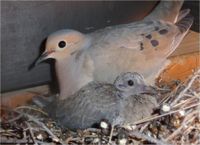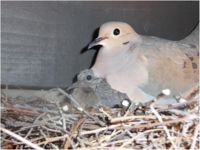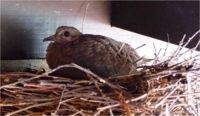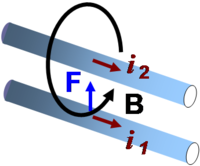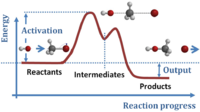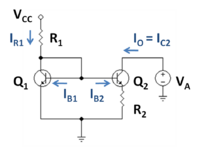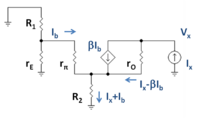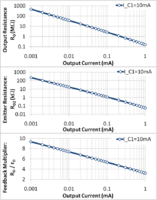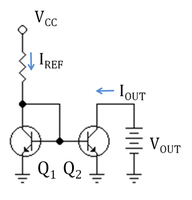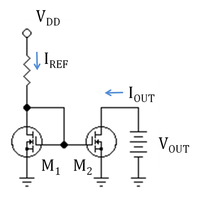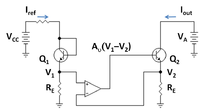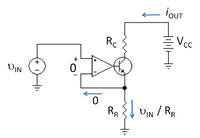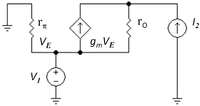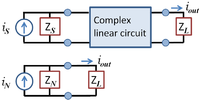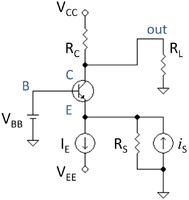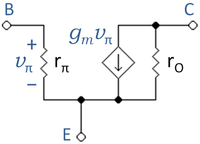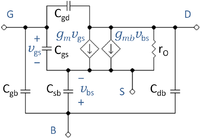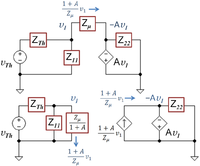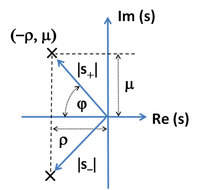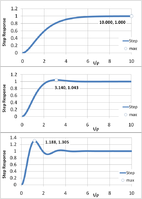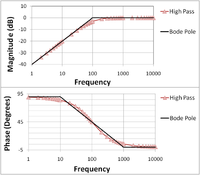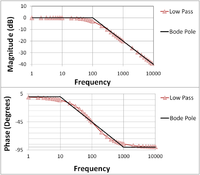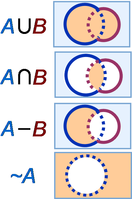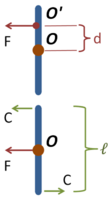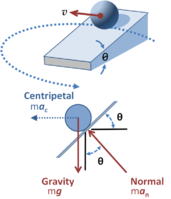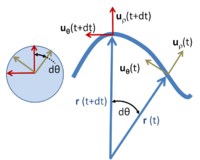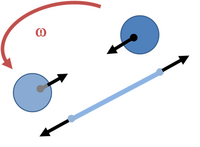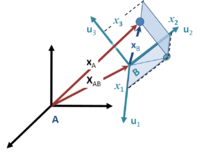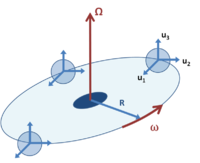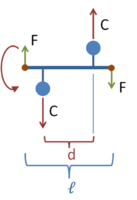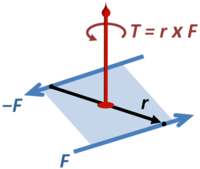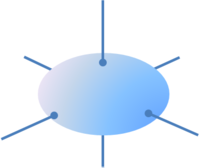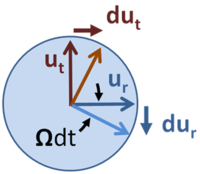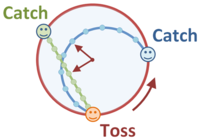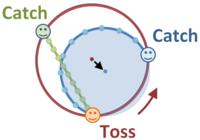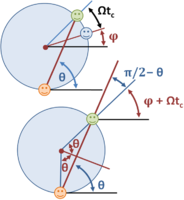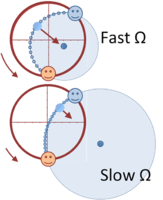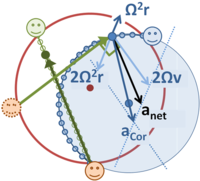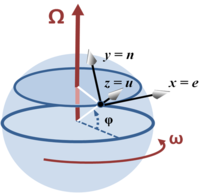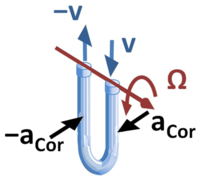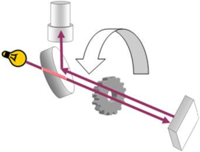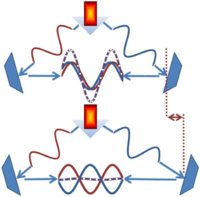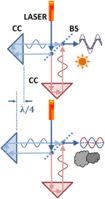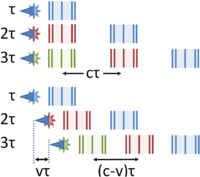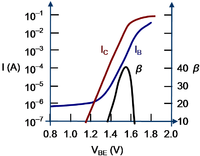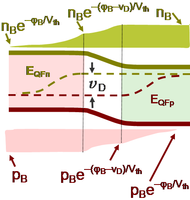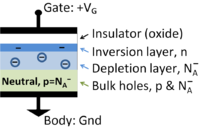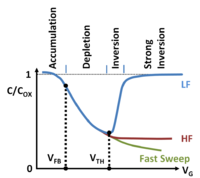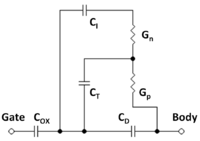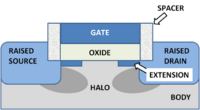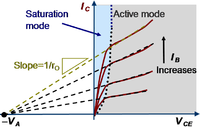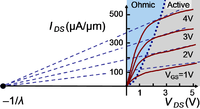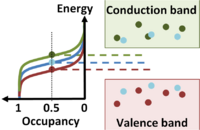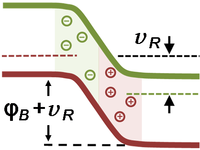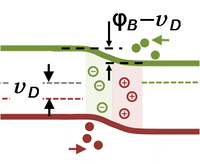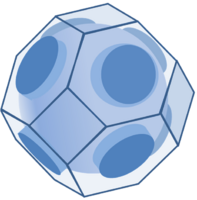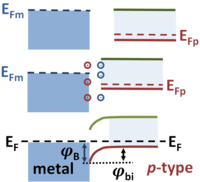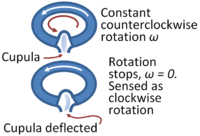< User:John R. BrewsRevision as of 07:56, 20 June 2011 by imported>John R. Brews
Angle brackets: & #x27E8; = ⟨ & #x27E9; = ⟩ & #10216; = ⟨ & #10217;= ⟩ <Φ|Ψ> <Φ|Ψ> <Φ|Ψ> ⟨Φ|Ψ⟩ ⟨Φ|Ψ⟩  ⟨Φ|Ψ⟩ ⟨Φ|Ψ⟩
⟨Φ|Ψ⟩ ⟨Φ|Ψ⟩
Photos
| Photos
|
|
|
(PD) Photo: John R. Brews
|
Mourning dove on nest in Tucson
|
|
|
(PD) Photo: John R. Brews
|
Morning dove with squab, Tucson AZ.
|
|
|
(PD) Photo: John R. Brews
|
Mourning dove with squab.
|
|
|
(PD) Photo: John R. Brews
|
Mourning dove squab.
|
|
|
(PD) Image: John R. Brews
|
Mourning dove on saguaro cactus, Tucson AZ.
|
|
Magnetism
| Magnetism
|
|
|
(CC) Image: John R. Brews
|
B-field lines near uniformly magnetized sphere
|
|
|
(CC) Image: John R. Brews
|
Magnetic flux density vs. magnetic field in steel and iron
|
|
|
(PD) Image: John R. Brews
|
B-field from current I2 in wire 2 causes force F on wire 1.
|
|
Chemistry
| Chemistry
|
|
|
(PD) Image: John R. Brews
|
Reactants cross an energy barrier, enter an intermediate state and finally emerge in a lower energy configuration.
|
|
Circuits
| Current sources
|
|
|
(CC) Image: John R. Brews
|
Widlar current source using bipolar transistors
|
|
|
(CC) Image: John R. Brews
|
Small-signal circuit for finding output resistance of the Widlar source
|
|
|
(CC) Image: John R. Brews
|
Design trade-off between output resistance and output current in Widlar source
|
|
|
(PD) Image: John R. Brews
|
A current mirror implemented with npn bipolar transistors using a resistor to set the reference current IREF; VCC = supply voltage.
|
|
|
(PD) Image: John R. Brews
|
An n-channel MOSFET current mirror with a resistor to set the reference current
|
|
|
(PD) Image: John R. Brews
|
Gain-boosted current mirror with op amp feedback to increase output resistance.
|
|
|
(PD) Image: John R. Brews
|
MOSFET version of wide-swing current mirror; M1 and M2 are in active mode
|
|
|
(PD) Image: John R. Brews
|
Operational-amplifier based current sink. Because the op amp is modeled as a nullor, op amp input variables are zero regardless of the values for its output variables.
|
|
|
(PD) Image: John R. Brews
|
A digital inverter circuit using a bipolar transistor.
|
|
|
(PD) Image: John R. Brews
|
Transfer characteristic of bipolar inverter showing modes.
|
|
|
(PD) Image: John R. Brews
|
Two-port network with symbol definitions.
|
|
|
(PD) Image: John R. Brews
|
Z-equivalent two port showing independent variables I1 and I2.
|
|
|
(PD) Image: John R. Brews
|
Y-equivalent two port showing independent variables
|
|
|
(PD) Image: John R. Brews
|
H-equivalent two-port showing independent variables
|
|
|
(PD) Image: John R. Brews
|
G-equivalent two-port showing independent variables
|
|
| Small-signal circuits
|
|
|
(PD) Image: John R. Brews
|
Small-signal circuit for pn-diode driven by a current signal represented as a Norton source.
|
|
|
(PD) Image: John R. Brews
|
Bipolar current mirror with emitter resistors
|
|
|
(PD) Image: John R. Brews
|
Small-signal circuit for bipolar current mirror
|
|
|
(PD) Image: John R. Brews
|
Common base circuit with active load and current drive.
|
|
|
(PD) Image: John R. Brews
|
Common-base amplifier with AC current source I1 as signal input
|
|
|
(PD) Image: John R. Brews
|
Bipolar transistor with base grounded and signal applied to emitter.
|
|
|
(PD) Image: John R. Brews
|
Common-base amplifier with AC voltage source V1 as signal input
|
|
|
(PD) Image: John R. Brews
|
The result of applying Norton's theorem.
|
|
|
(PD) Image: John R. Brews
|
Bipolar current buffer.
|
|
|
(PD) Image: John R. Brews
|
Small-signal circuit to find output current.
|
|
|
(PD) Image: John R. Brews
|
Small-signal circuit with test current iX to find Norton resistance.
|
|
|
(PD) Image: John R. Brews
|
The result of applying Thévenin's theorem.
|
|
|
(PD) Image: John R. Brews
|
Bipolar buffer.
|
|
|
(PD) Image: John R, Brews
|
Small-signal circuit for voltage follower.
|
|
|
(PD) Image: John R. Brews
|
Determination of the small-signal output resistance.
|
|
|
(PD) Image: John R. Brews
|
Simplified, low-frequency hybrid-pi BJT model.
|
|
|
(PD) Image: John R. Brews
|
Bipolar hybrid-pi model with parasitic capacitances.
|
|
|
(PD) Image: John R. Brews
|
Simplified, low-frequency hybrid-pi BJT model.
|
|
|
(PD) Image: John R. Brews
|
Bipolar hybrid-pi model with parasitic capacitances.
|
|
|
(PD) Image: John R. Brews
|
Simplified, three-terminal MOSFET hybrid-pi model.
|
|
|
(PD) Image: John R. Brews
|
Four-terminal small-signal MOSFET circuit.
|
|
|
(PD) Image: John R. Brews
|
Miller effect: These two circuits are equivalent.
|
|
| Amplifiers
|
|
|
(PD) Image: John R. Brews
|
Some terms used to describe step response in time domain.
|
|
|
(PD) Image: John R. Brews
|
Ideal negative feedback model; open loop gain is AOL and feedback factor is β.
|
|
|
(PD) Image: John R. Brews
|
Conjugate pole locations for step response of two-pole feedback amplifier.
|
|
|
(PD) Image: John R. Brews
|
Step-response of a linear two-pole feedback amplifier.
|
|
|
(PD) Image: John R. Brews
|
Step response for three values of time constant ratio.
|
|
|
(PD) Image: John R. Brews
|
Bode gain plot to find phase margin of two-pole amplifier.
|
|
|
(PD) Image: John R. Brews
|
|
|
|
|
(PD) Image: John R. Brews
|
|
|
|
|
(PD) Image: John R. Brews
|
Bode magnitude plot for zero and for low-pass pole
|
|
|
(PD) Image: John R. Brews
|
Bode phase plot for zero and for low-pass pole
|
|
|
(PD) Image: John R. Brews
|
Bode magnitude plot for pole-zero combination; the location of the zero is ten times higher than in above figures
|
|
|
(PD) Image: John R. Brews
|
Bode phase plot for pole-zero combination; the location of the zero is ten times higher than in above figures
|
|
|
(PD) Image: John R. Brews
|
Gain of feedback amplifier AFB in dB and corresponding open-loop amplifier AOL.
|
|
|
(PD) Image: John R. Brews
|
Phase of feedback amplifier °AFB in degrees and corresponding open-loop amplifier °AOL.
|
|
|
(PD) Image: John R. Brews
|
Gain of feedback amplifier AFB in dB and corresponding open-loop amplifier AOL.
|
|
|
(PD) Image: John R. Brews
|
Phase of feedback amplifier AFB in degrees and corresponding open-loop amplifier AOL.
|
|
|
(PD) Image: John R. Brews
|
Operational amplifier with compensation capacitor CC between input and output to cause pole splitting.
|
|
|
(PD) Image: John R. Brews
|
Operational amplifier with compensation capacitor transformed using Miller's theorem to replace the compensation capacitor with a Miller capacitor at the input and a frequency-dependent current source at the output.
|
|
|
(PD) Image: John R. Brews
|
Idealized Bode plot for a two pole amplifier design.
|
|
|
(PD) Image: John R. Brews
|
Miller capacitance at low frequencies CM (top) and compensation capacitor CC (bottom) as a function of gain
|
|
Math
| Math & logic
|
|
|
(PD) Image: John R. Brews
|
Venn diagrams; set A is the blue circle (left) and its interior, set B is the red circle (right) and its interior.
|
|
Forces
| Forces
|
|
|
(CC) Image: John R. Brews
|
Force and its equivalent force and couple
|
|
|
(PD) Image: John R. Brews
|
Centripetal force FC upon an object held in circular motion by a string of length R. The string is under tension FT, as shown separately to the left.
|
|
|
(PD) Image: John R. Brews
|
Upper panel: Ball on a banked circular track moving with constant speed v; Lower panel: Forces on the ball.
|
|
|
(PD) Image: John R. Brews
|
Polar unit vectors at two times t and t + dt for a particle with trajectory r ( t ); on the left the unit vectors uρ and uθ at the two times are moved so their tails all meet, and are shown to trace an arc of a unit radius circle.
|
|
|
(PD) Image: John R. Brews
|
Local coordinate system for planar motion on a curve.
|
|
|
(PD) Image: John R. Brews
|
Exploded view of rotating spheres in an inertial frame of reference showing the centripetal forces on the spheres provided by the tension in a rope tying them together.
|
|
|
(PD) Image: John R. Brews
|
Rotating spheres subject to centrifugal (outward) force in a co-rotating frame in addition to the (inward) tension from the rope.
|
|
|
(PD) Image: John R. Brews
|
The "whirling table". The rod is made to rotate about the axis and (from the bead's viewpoint) the centrifugal force acting on the sliding bead is balanced by the weight attached by a cord over two pulleys.
|
|
|
(PD) Image: John R. Brews
|
Force diagram for an element of water surface in co-rotating frame.
|
|
|
(PD) Image: John R. Brews
|
An object located at xA in inertial frame A is located at location xB in accelerating frame B.
|
|
|
(PD) Image: John R. Brews
|
An orbiting but fixed orientation coordinate system B, shown at three different times.
|
|
|
(PD) Image: John R. Brews
|
An orbiting coordinate system B in which unit vectors uj, j = 1, 2, 3 rotate to face the rotational axis.
|
|
|
|
|
Crossing a rotating carousel walking at constant speed, a spiral is traced out in the inertial frame, while a simple straight radial path is seen in the frame of the carousel.
|
|
|
(PD) Image: John R. Brews
|
Rotating shaft unbalanced by two identical attached weights.
Image
|
|
|
(PD) Image: John R. Brews
|
Torque vector T representing a force couple.
|
|
|
(PD) Image: John R. Brews
|
An ellipsoid showing its axes
|
|
|
(PD) Image: John R. Brews
|
While the pendulum P swings in a fixed plane about its hanger at H, the planes of the Earth observer rotate.
|
|
|
(PD) Image: John R. Brews
|
As time progresses each unit vector's change is orthogonal to it.
|
|
|
(PD) Image: John R. Brews
|
Tossed ball on carousel. At the center of the carousel, the path is a straight line for a stationary observer, and is an arc for a rotating observer.
|
|
|
(PD) Image: John R. Brews
|
From the center of curvature of the path, the ball executes approximate circular motion.
|
|
|
(PD) Image: John R. Brews
|
Some useful notation for the ball toss on a carousel.
|
|
|
(PD) Image: John R. Brews
|
The ball follows a nearly circular path about the center of curvature.
|
|
|
(PD) Image: John R. Brews
|
The inertial forces on the ball combine to provide the resultant centripetal force required by Newton's laws for circular motion.
|
|
|
(PD) Image: John R. Brews
|
Stats for a particular path of ball toss.
|
|
|
(PD) Image: John R. Brews
|
Tangent-plane coordinate system on rotating Earth at latitude φ.
|
|
|
(PD) Image: John R. Brews
|
Wind motion in direction of pressure gradient is deflected by the Coriolis force.
|
|
|
(PD) Image: John R. Brews
|
In the northern hemisphere, Coriolis force forms a counterclockwise flow.
|
|
|
(PD) Image: John R. Brews
|
Path of ball for four rates of rotation. Catcher positioned so the catch is made at 12 o'clock in all cases.
|
|
|
(PD) Image: John R. Brews
|
A fluid forced through a rocking tube experiences a Coriolis acceleration.
|
|
Electromagnetism
| Electromagnetism
|
|
|
(CC) Image: John R. Brews
|
|
|
|
|
(PD) Image: John R. Brews
|
The Fizeau apparatus for measuring the speed of light by passing it between the cogs of a rotating gear and reflecting it back through adjacent cogs.
|
|
|
(PD) Image: John R. Brews
|
Measuring a length using interference fringes.
|
|
|
(PD) Image: John R. Brews
|
The wavelengths of standing waves in a box that have zero amplitude (nodes) at the walls.
|
|
|
(PD) Image: John R. Brews
|
|
|
|
|
(PD) Image: John R. Brews
|
Boat opposing incoming waves experiences the Doppler effect
|
|
|
|
|
Doppler shift with moving source
|
|
|
|
|
Infinitesimal current elements in two closed current-carrying loops
|
|
|
|
|
Origin at 0, observation point at P, and present position of charge q distant by R from observation point P.
|
|
Devices
| Devices
|
|
|
|
|
Mesa diode structure (top) and planar diode structure with guard-ring (bottom).
|
|
|
|
|
Gummel plot and current gain for a GaAs/AlGaAs heterostructure bipolar transistor.
|
|
|
|
|
Quasi-Fermi levels and carrier densities in forward biased pn-diode.
|
|
|
|
|
Cross section of MOS capacitor showing charge layers
|
|
|
|
|
Three types of MOS capacitance vs. voltage curves. VTH = threshold, VFB = flatbands
|
|
|
|
|
Small-signal equivalent circuit of the MOS capacitor in inversion with a single trap level
|
|
|
|
|
A power MOSFET; source and body share a contact.
|
|
|
|
|
Two bipolar transistor modes, showing extrapolation of asymptotes to the Early voltage.
|
|
|
|
|
Channel length modulation in 3/4μm technology.
|
|
|
|
|
Early voltage for MOSFETs from a 0.18μm process as a function of channel strength.
|
|
|
|
|
Calculated density of states for crystalline silicon.
|
|
|
|
|
Field effect: At a gate voltage above threshold a surface inversion layer of electrons forms at a semiconductor surface.
|
|
|
|
|
Occupancy comparison between n-type, intrinsic and p-type semiconductors.
|
|
|
|
|
Nonideal pn-diode current-voltage characteristics
|
|
|
|
|
Band-bending diagram for pn-junction diode at zero applied voltage
|
|
|
|
|
Band-bending for pn-diode in reverse bias
|
|
|
|
|
Quasi-Fermi levels in reverse-biased pn-junction diode
|
|
|
|
|
Band-bending diagram for pn-diode in forward bias
|
|
|
|
|
Fermi occupancy function vs. energy departure from Fermi level in volts for three temperatures
|
|
|
|
|
Fermi surface in k-space for a nearly filled band in the face-centered cubic lattice
|
|
|
|
|
A constant energy surface in the silicon conduction band consists of six ellipsoids.
|
|
|
|
|
Planar Schottky diode with n+-guard rings and tapered oxide.
|
|
|
|
|
Comparison of Schottky and pn-diode current voltage curves.
|
|
|
|
|
Schottky barrier formation on p-type semiconductor. Energies are in eV.
|
|
|
|
|
Schottky diode under forward bias VF.
|
|
|
|
|
Schottky diode under reverse bias VR.
|
|
|
|
|
Critical electric field for breakdown versus bandgap energy in several materials.
|
|
|
|
|
Schottky barrier height vs. metal electronegativity for some selected metals on n-type silicon.
|
|
| The maximum number of images is 30! Please add another gallery !
|
Vestibular system
| Vestibular system
|
|
|
|
|
When the semicircular canal stops rotating, inertia causes the cupula to register a false rotation in the opposite sense.
|
|
|
|
|
Top: The semicircular canals with head erect. Bottom: the canals with head tipped forward.
|
|


